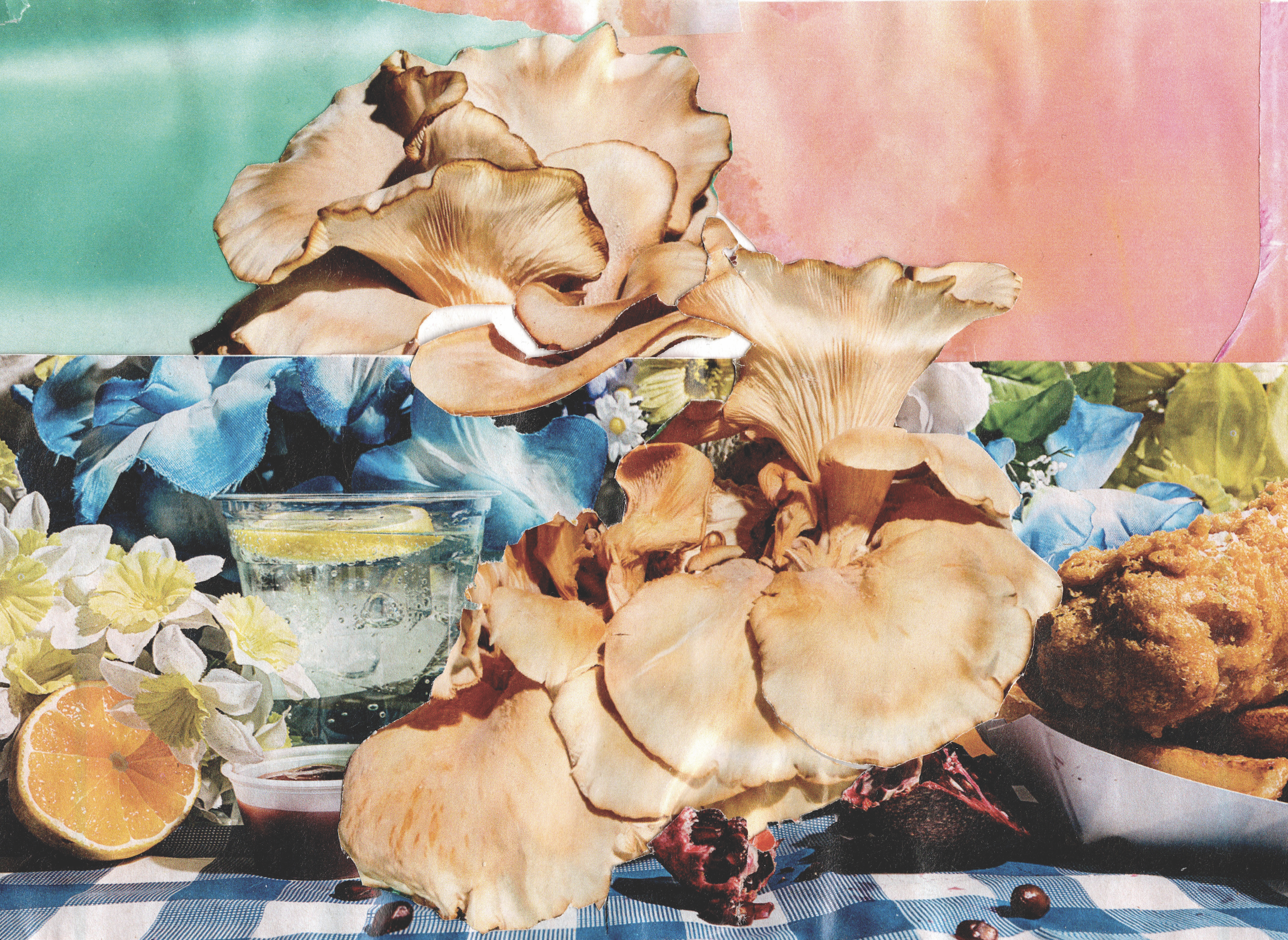
beloved apocalypse
A collaboration in times of crisis in conversation with Franny Choi’s poem “The World Keeps Ending, and the World Goes On.

The World Keeps Ending, and the World Goes On
Before the apocalypse, there was the apocalypse of boats:
boats of prisoners, boats cracking under sky-iron, boats making corpses
bloom like algae on the shore. Before the apocalypse, there was the apocalypse
of the bombed mosque. There was the apocalypse of the taxi driver warped
by flame. There was the apocalypse of the leaving, and the having left—
of my mother unsticking herself from her mother’s grave as the plane
barreled down the runway. Before the apocalypse, there was the apocalypse
of planes. There was the apocalypse of pipelines legislating their way
through sacred water, and the apocalypse of the dogs. Before which was
the apocalypse of the dogs and the hoses. Before which, the apocalypse
of dogs and slave catchers whose faces glowed by lantern-light.
Before the apocalypse, the apocalypse of bees. The apocalypse of buses.
Border fence apocalypse. Coat hanger apocalypse. Apocalypse in
the textbooks’ selective silences. There was the apocalypse of the settlement
and the soda machine; the apocalypse of the settlement and
the jars of scalps; there was the bedlam of the cannery; the radioactive rain;
the chairless martyr demanding a name. I was born from an apocalypse
and have come to tell you what I know—which is that the apocalypse began
when Columbus praised God and lowered his anchor. It began when a continent
was drawn into cutlets. It began when Kublai Khan told Marco, Begin
at the beginning. By the time the apocalypse began, the world had already
ended. It ended every day for a century or two. It ended, and another ending
world spun in its place. It ended, and we woke up and ordered Greek coffees,
drew the hot liquid through our teeth, as everywhere, the apocalypse rumbled,
the apocalypse remembered, our dear, beloved apocalypse—it drifted
slowly from the trees all around us, so loud we stopped hearing it.
Notes: “Bedlam of the cannery” is borrowed from Martín Espada.
Franny Choi is the author of two poetry collections, Soft Science (Alice James Books) and Floating, Brilliant, Gone (Write Bloody Publishing), as well as a chapbook, Death by Sex Machine (Sibling Rivalry Press). She is a Kundiman Fellow, a 2019 Ruth Lilly and Dorothy Sargent Rosenberg Fellow, a recipient of Princeton’s Holmes National Poetry Prize, and a graduate of the University of Michigan’s Helen Zell Writers Program. She is the founder of Brew & Forge and co-hosts the podcast VS alongside Danez Smith. Her new poetry collection, The World Keeps Ending, and the World Goes On, is forthcoming from Ecco Press.
poem
A POSSIBLE PRACTICE: Beloved Apocalypse is a collaborative book featuring the work of eleven Maine-based artists and writers in conversation with Franny Choi’s poem “The World Keeps Ending, and the World Goes On.”
art
In the winter of 2019, we put out the call to Maine-based artists to create work with us for our 2020 cycle of A POSSIBLE PRACTICE in conversation with Franny Choi’s poem “The World Keeps Ending, and the World Goes On.” Beneath our daily routines, we were feeling the unignorable currents of apocalypse carrying us, not knowing exactly what was to come.
We envisioned this practice as an invitation to start reckoning with our cyclical tides of apocalypse, to crack open a door to processing our collective grief through art. We thought of it as a continuation of our previous cycle, etymologies: naming as a means to know, giving language to apocalypses so that we could begin to see them (and our roles in them) more clearly. We imagined the culmination of this cycle as a gathering: a poetry reading in an intimate setting (a Volvo garage? an abandoned grange hall?), surrounded by our art, with a foraged feast by Rachel Alexandrou.
And in early spring 2020, another apocalypse washed over us all. We both lost our jobs in the food service industry immediately. We pivoted, navigated, restructured the pieces of our days. We asked our participating artists if they still had time and space for this project. In different ways, at different times, we all found yes. We made art. We cared and were cared for. We wrote emails, we hated emails, we wrote letters. We drew comics with strangers online. We questioned and cried and questioned again, from new angles, from the bed, from the floor. We held Samaa’s debut chapbook for the first time and marveled as we wrapped and shipped copies to our community, across the country, to our local libraries. On a bleak day, our inbox held a tender note and a series of pictures from Nicole: her public art piece displayed on a bulletin board in Portland that had gone into disuse during the pandemic. And the news that folks from Wisconsin, Minneapolis, Melbourne, New Mexico, Sacramento, the UK, and beyond had printed out their own copies of Nicole’s work and posted them, too. “Grief is collective and we are not alone.” We were not alone. The work was alive in the wilderness of this world.
This practice is a love letter to our cycle of practice, to “...our dear, beloved apocalypse.”
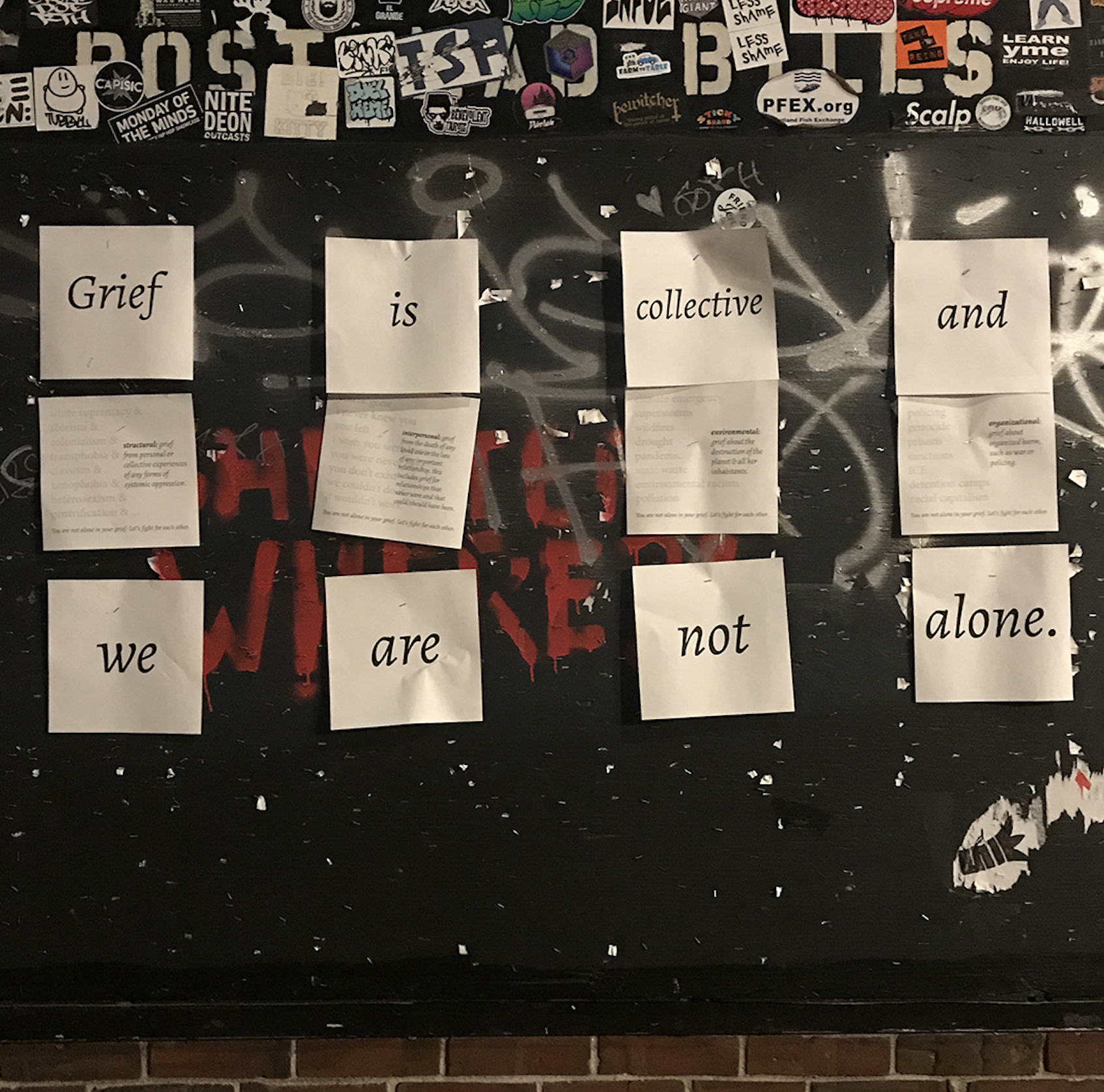
Nicole Manganelli | "Grief is collective and we are not alone" | Downloadable PDF for Public Posting
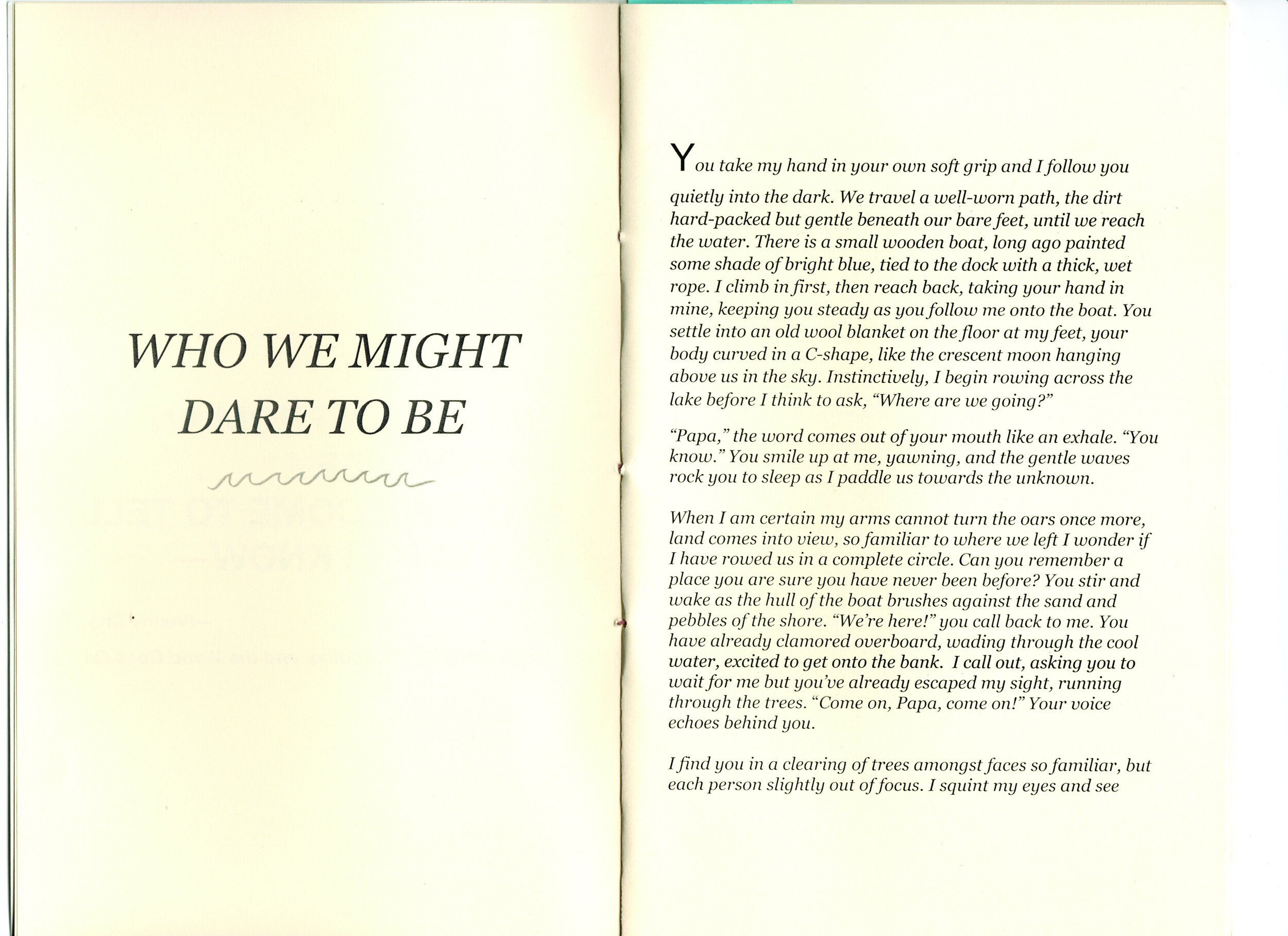
Stephen A. Stratton | "Who We Might Dare to Be" | Chapbook

Kenny Cole | "Testing the Waters" | Gouache on paper | 22” x 30”

Andy Mauery | "apocalypse border fence neckpiece with last, hidden bee" | Human Hair with Blue Thread
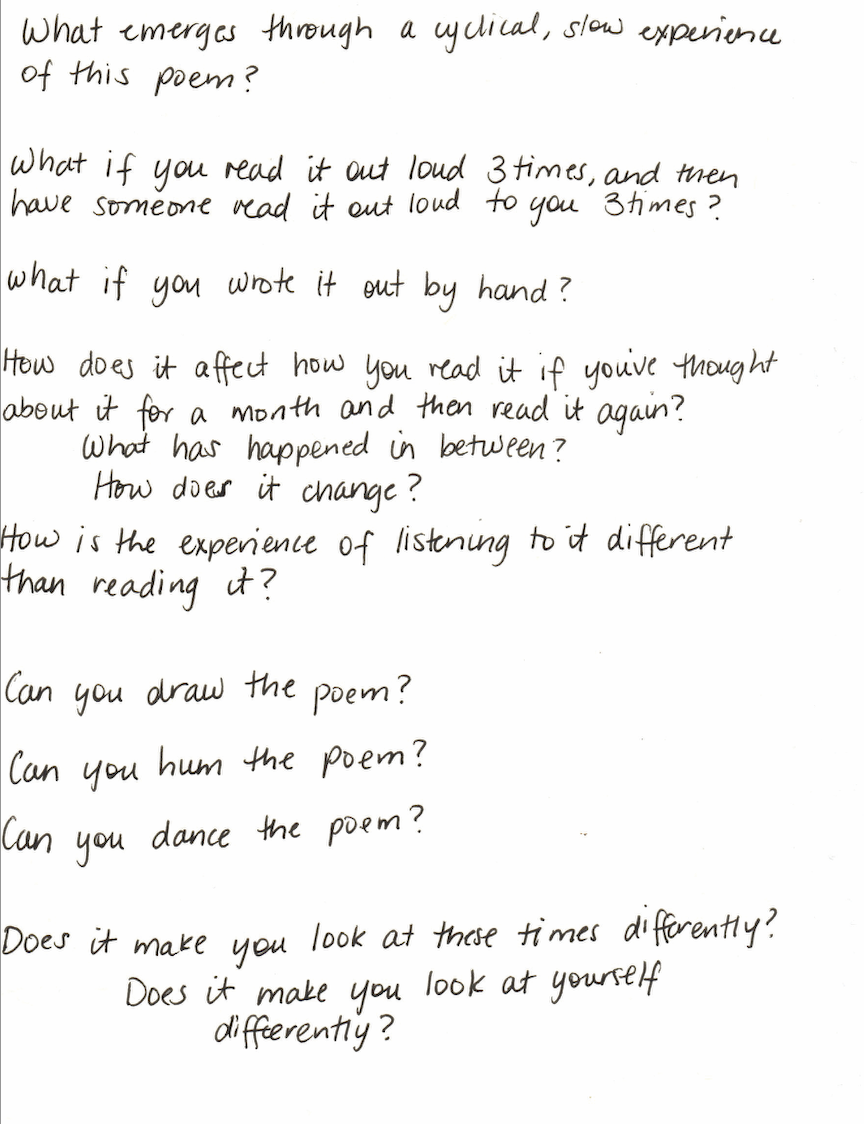
Devon Kelley-Yurdin | Guiding Questions from "Slow Brew: An Interactive Poetry Experience" | Online Workshop
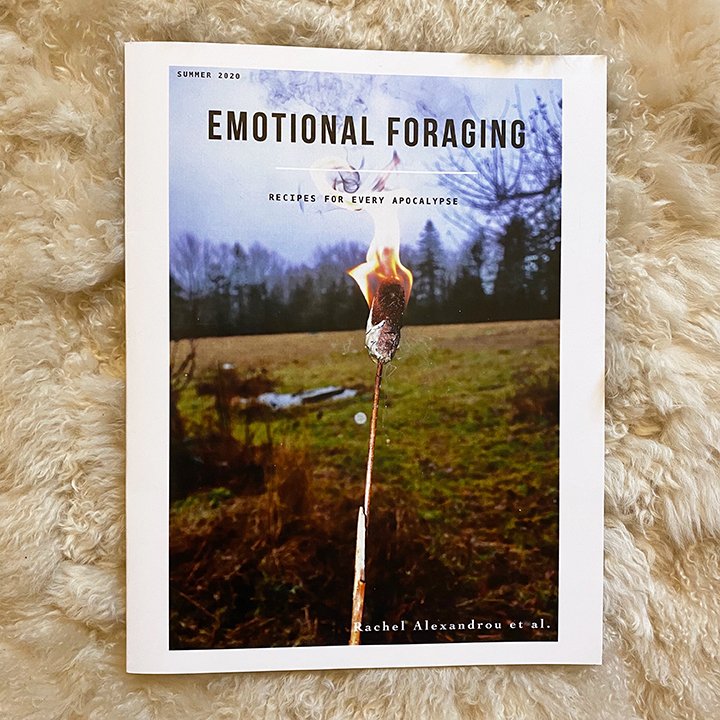
Rachel Alexandrou | "Emotional Foraging: Recipes for Every Apocalypse" | Collaborative Zine
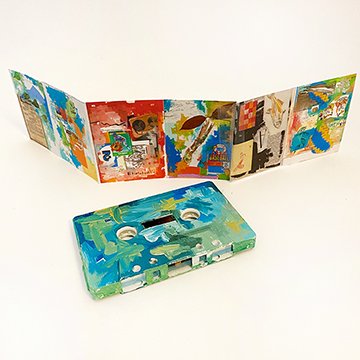
Mike Lewis | "Pandemic at the Disco" | Audio Cassette of Original Soundscapes with Collaged Case
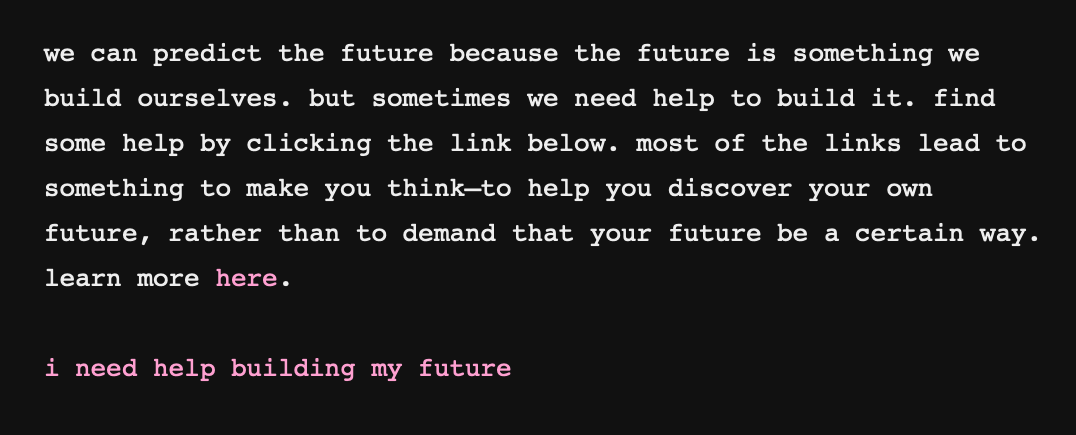
EA Kane | from "apokalyptein" | Online Twine Game
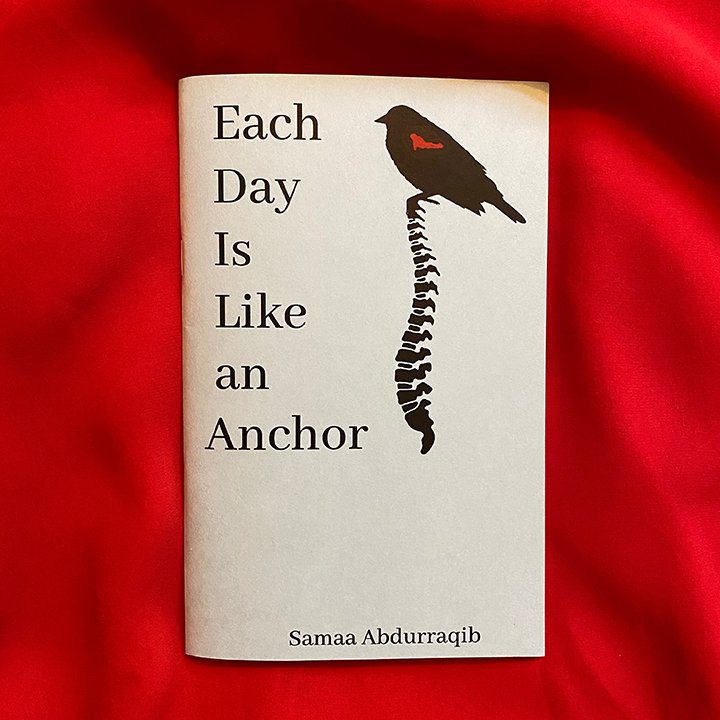
Samaa Abdurraqib | "Each Day Is Like an Anchor" | Chapbook
artists
-
SAMAA ABDURRAQIB [@rahmah500] moved to Maine in 2010 to teach college students. By the time that job was over, she’d fallen in love with Maine and decided to stay for a bit. PhD school taught Samaa that words need to be researched and well-argued to be powerful, and she got very good at creating those kinds of words, but forgot how to write other kinds of words. After 15 years away from poetry and creative non-fiction, Samaa is trying to be brave once again.
-
RACHEL ALEXANDROU [@giantdaughter] is a Maine artist and forager. She has been putting on art feasts that feature foraged food for three years and foraging for over ten years. Her work is about the plants and the environments they inhabit, but also about relinquishing fear (of the unknown) through the act of discovery. By identifying, processing and eating wild plants, she offers her audience a way to connect to the wild world with pleasure instead of fear.
-
KENNY COLE [@mrkennycole] studied drawing at Pratt Institute in Brooklyn, New York, earning a B.F.A. in 1981. Upon graduation he was confronted with a burgeoning neo-expressionist art scene in New York City’s East Village, thus his work adopted an edgy, graphic, second-wave graffiti-like sensibility. He joined the planning committee of City Without Walls Gallery in 1983 and exhibited extensively in alternative spaces in and around New York City until moving to Maine in 1994. Here he has continued to exhibit in alternative spaces, has helped organize political art actions with the Union of Maine Visual Artists and served for 10 years on the board of directors at Waterfall Arts in Belfast. Cole was awarded the Spring Monhegan Island Artists Residency in 2012 and an Adolph and Esther Gottlieb Foundation Grant in 2017. He will be showing new large gouache paintings on paper in December 2020 at Perimeter Gallery in Belfast, Maine.
-
EA KANE [@empress.eakane] is an artist living in Waterville, ME. Their work has appeared in The River, 30North, and Wanderlust Journal, and they were Alice James Books’ first ever Director’s Chair Fellow.
-
DEVON KELLEY-YURDIN [@____dky____] is an interdisciplinary artist, designer, educator, facilitator, cultural organizer, etc etc etc. They live on Abenaki/Wabanaki land in Portland, Maine. They are white, queer, nonbinary, jewish fey, elder-millenial from a middle-class background. Creativity, communication and logistical prowess, network-weaving, and baby whispering are currently their primary tools for community care and collective liberation.
-
MICHAEL LEWIS is an artist and former New Yorker who currently works as a librarian and educator during the day. His work has undergone a number of metamorphoses, but now looks like a series of watercolors, collages, and zine projects exploring awareness of environment and interpersonal relationships.
-
NICOLE MANGANELLI [@radicalemprints] is a printmaker living in Portland, Maine. Her work focuses on themes of liberation, grief, intersectional feminism, typography, and collectivity. She is the creator of the #anticapitalistlovenotes print series and also the designer of the Printers’ Tarot: a 78-image tarot deck made entirely out of Garamond letterforms.
-
ANDY MAUERY [@andymauery] is a Maine-based visual artist whose current work often focuses on species endangered in New England, or those having some type of protected or rare status recognized by government entities. Her work has appeared in national and international exhibitions, including the Chaves de la Rosa Cultural Complex (Peru); MOBIUS in Boston; SPACES gallery in Cleveland; and 3S Artspace in Portsmouth, NH. She’s been the grateful recipient of several grants including an A.R.T. Fund Individual Award from Berkshire Taconic Community Foundation, a Good Idea from the Maine Arts Commission, and an individual fellowship from The American-Scandinavian Foundation.
-
STEPHEN A. STRATTON [@papabear_81] is a writer who lives and works in Portland, Maine. He spends much of his time alongside his family, exploring the rich natural landscape of Maine. Stephen’s work is reflective of his queer/trans identity, and his journey to become a parent. His writing centers around themes of grief & loss, family, identity, and his evolving relationship to his body.
readings
No one creates in a vacuum. This space is dedicated to sharing pieces that are shaping our practices and deepening our understanding of each cycle’s theme.
“As Coronavirus Panic Spreads, I Went in Search of Wuhan’s Defining Dish” by Zoe Yang
Thinking about [viruses, racism, fear] as contagion; protective measures (practical or symbolic); living memory; infectious “American Narrative”; forms of panic; inaction paralysis; the body as signifier / container / belonging; variant homesicknesses; distance; boundaries; quarantine vs seclusion vs hiding; safety (or the idea of); the untranslatable; food as intimate as person, as place; isolation; calling out from open windows; movement of people, the imaginary, of wind; what it’s like to not touch the ground
“Cathy Park Hong on finding clarity through art & poetry within our political landscape”
Thinking about institutions / anti-institutionalism; social media as sharing, as access, as person-to-person; creating our own ways to move forward; “what is the efficacy of our work?”; the importance of process, of practice, of collaboration; what is the sustained power of protest?; activating from “grief to grievance”; to bear witness through art, through writing; to record, to reach out, to return to together
“A Space for Magnanimity: Talking with E.J. Koh”
Thinking about language as a living thing; hybridity; distance(s) within lineage; mothers vs mommies; blurring genres / histories / bodies / time; translation; “to speak of things that have never been spoken” i.e. naming as a means to know; the visual/emotional nature of text; the violence of colonialism; generational sorrow; memory + language alive in the body; the personal is political; multiple meanings/readings; simultaneity; reading as nourishment for creating; to open, to soften, unguarded + ready; the why: “the why is love”
“Letter to Someone Living Fifty Years from Now” by Matthew Olzmann
Thinking about the inherited, tangible future; legacies of our (in)actions; recipes for solace among seemingly universal wreckage; to live daily at the tipping point; speciesism; connecting to + becoming ancestors; “love is an action”; transcendence; foresight; teaspoon joys on the tongue
“THE CRAFT OF WRITING: C Pam Zhang on Writing in a Time of Grief”
Thinking about bread, baking; “_________ is writing!”; lists; listlessness; work; (“you are worth more than your productivity”); personal tool kits; work; what holds my attention?; tenderness; grief; now what?; what is work?; the past where we could freely touch; the distance from the mountain allows us to see the mountain; groping through the cloud of it, this deep amorphous fog
“Do not make Grief your God” by Mahogany L. Browne
Thinking about daily rituals, recurring coffees; frequencies of grief; grief as a guest we honor and name; naming as a means to know; the shape of a name in the mouth, in the eyes, in the open air; the practice of expressing love across distance, of self love, of loving a tomorrow self; of fluid grief, of futures; to expand, feel, hold; to move; reciprocity, like fresh water; companion grief; shadow self; sun-bright and showing
Something I Saw: Kimberly Drew’s visual newsletter
Thinking about the brevity of our attention spans; the inability to read, to retain, to think a clear/complete thought; how we process the visual, quickly at first, then unfolding over time; the depth of an individual piece and the depth of a lovingly curated collection; proximity; our longing to be in the company of art, in a museum, in a living room together; the vibrancy of desire, of intimacy in all forms: letters handwritten with hand-pressed with flowers, inbox reminders, chatrooms, Zoom confessionals, shared laughs in the sun at a distance
Support for A POSSIBLE PRACTICE 2020 was provided by a project grant from The Ellis-Beauregard Foundation and an artist residency at Hewnoaks.






